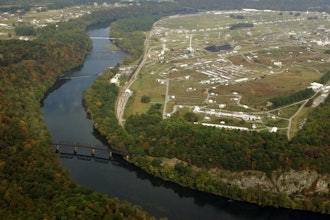It’s only fitting that a technology as complex and intriguing as the railgun would have a potential ending that is just as intriguing and complex.
For those unfamiliar, I’m referencing the Office of Naval Research’s project focused on the use of an electromagnetic cannon capable of firing up to ten 45-pound metal slugs a minute at speeds of 4,500 mph in melting targets up to 100 miles away.
It’s been called the Holy Grail of advanced weaponry, but due to conflicting budgetary agendas, some are calling it dead in the water.
According to a report from taskandpurpose.com, the Strategic Capabilities Office (SCO) has begun scrutinizing the railgun’s future, the $500 million that’s already been invested, and how much more will be needed to get it in use by a targeted deadline in the mid-2020s.
In development by General Atomics and BAE Systems since 2005, the railgun lives on electricity, meaning its usefulness is dependent upon access to an extremely large generator.
On land, that’s plausible. But the key strategic benefit of the railgun is mounting it to Naval warships.
However, accessing that amount of energy is not currently an option on the majority of the fleet. Additionally, the development of a universal mounting system for the railgun is currently prohibiting it from being placed on all of the necessary vessels.
This seems to have led SCO to focus more on the railgun’s hypervelocity projectile (HPV) ammunition. It feels the super-dense shell offers a unique level of compatibility with a wide range of artillery equipment already in place. So basically, they like the bullet more than the gun.
As the SCO works to divert more money into the HPV, supporters fear that any railgun progress will come to a halt as the project slips into DoD purgatory.
In addition to ship compatibility concerns, the weapon has also been struggling to reach the 10-shots/minute rate that Naval command was seeking. In testing as recent as this summer, it was operating at a rate of about half that.
Currently, railgun funding is in place for 2018, but the focus of those dollars will be key. While HPV funding appears strong, development dollars needed for the actual gun and mounting technology may not materialize.






















